A Tour of AxoGraph's Main Features
Analyze
Mouse Measure
Measuring amplitudes is as simple as point and click.
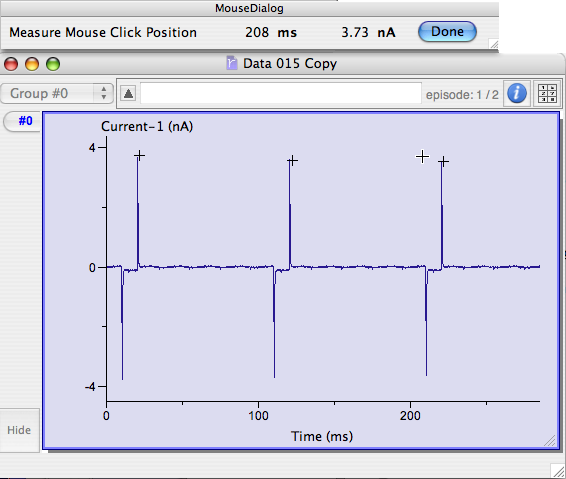
Multiple mouse clicks measure the amplitudes of several features.
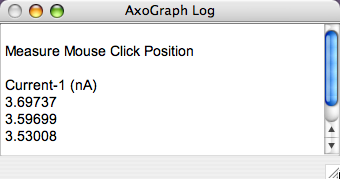
Results accumulate in the log window
Optionally measure the x-y location of each click, or the distance between pairs of clicks...
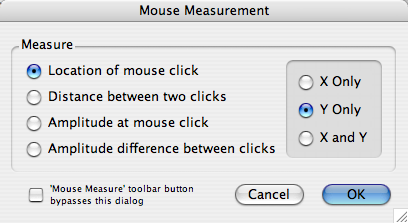
Cursor Measure
Place two vertical cursors on a graph and between then analyze the data points between the cursors...
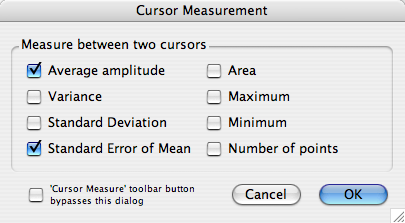
Flexible analysis of graphs with multiple traces, or groups of traces.
Temporarily mask traces to exclude them from analysis.

Simultaneous 'cursor measurement' of the amplitudes of all eleven traces in both the 'Membrane Voltage' group and the 'Current' group
Process Numeric Results
Analysis results accumulate as tab-delimited tables in the 'log' window. Combine and transpose tables, then create a graph from the results. Compute basic statistics for each column in a table.

A table of results from a single 'cursor measurement', as shown above
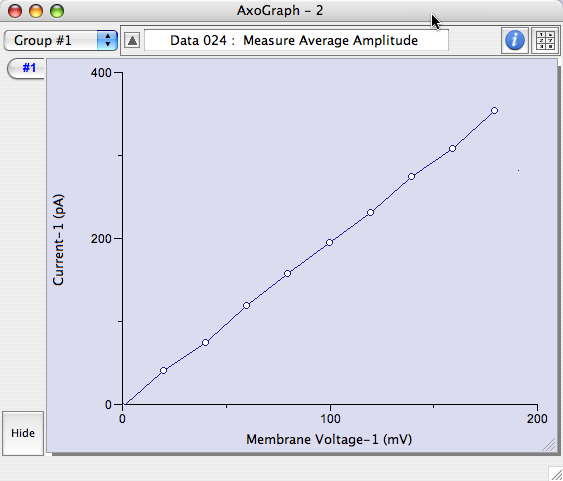
A current-voltage plot generated directly from the above table of results
Peak Measure
Automatically find peaks and measure their amplitudes and shape parameters. Find the largest peak in a trace, or all peaks greater than a threshold amplitude. Measure peak amplitude and location, rise-time, width and onset.

Event Detection
A sophisticated 'Event Detection Package' is included. It uses a sensitive 'sliding template' algorithm to identify events that match a specific time course (Clements and Bekkers, Biophys J 73:220-229). It can be used to identify, capture and filter spontaneous synaptic events, or extracellular action potentials. Several different templates can be used simultaneously.
Linear, Exponential and General Curve Fit
Standard linear regression, and fast multi-exponential fits. Type in any equation and fit it to a data trace using general curve fit. Optionally append the fitted curve to the graph. Fitted parameters accumulate in the log window.
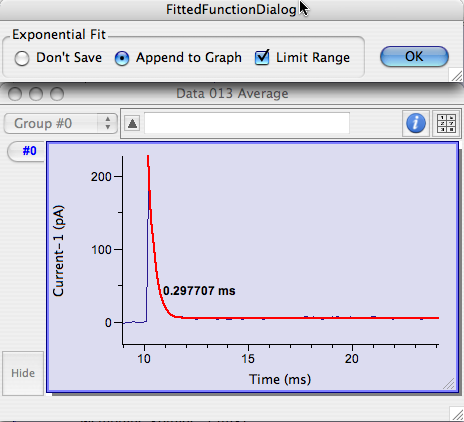
Baseline Subtraction
Subtract the steady-state level from every trace in a group or window.
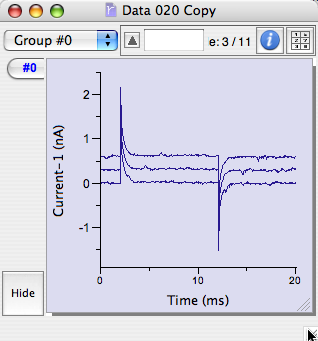 |
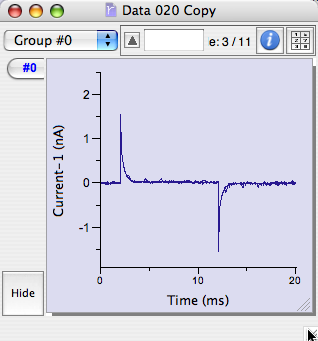 |
| Before baseline subtraction | After baseline subtraction |
Three different baseline subtraction algorithms are available...

- flat: subtract the average amplitude of the baseline region
- sloping: subtract the regression line fit to the baseline region
- two region: subtract the line interpolated between two separate baseline regions
Adjust X-axis Zero
Useful when measuring locations relative to a start point, or when fitting exponentials.

Time zero will be reset to the start of the event (10 ms)
Toolbars
Convenient toolbar access to the main analysis and display features...
| Analysis | Presentation | Navigation |
 |
 |
 |
... and for running frequently-used plug-in programs.

Programmable and Extensible
If none of the built-in analysis features fit your requirements, or if you want to automate a sequence of analysis steps, then a scripting / programming environment is available.
- automate analysis, or add new analysis features by writing plug-in programs
- supports C, Basic, Pascal or Fortran
- add new menus and toolbars
- pose alerts and dialogs
- read and write binary files
- precompiled plug-ins can be created for fast number-crunching
File Import and Export
To import a foreign file, select File -> Open then in the standard dialog, change the "Enable" popup menu either to "All Files", or to the desired file format.
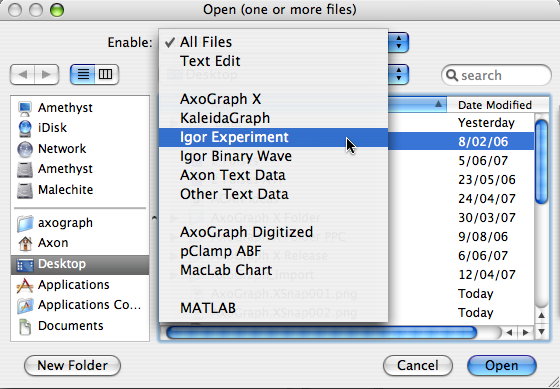
To import tab-delimited text data to a graph window, the "Other Text Data" option must be selected. If "All Files" is selected, the file will be read into a text edit window, not a graph window.
To export a graph to a foreign format, select File -> Export then in the standard dialog, change the "Format" popup menu to the desired file type.
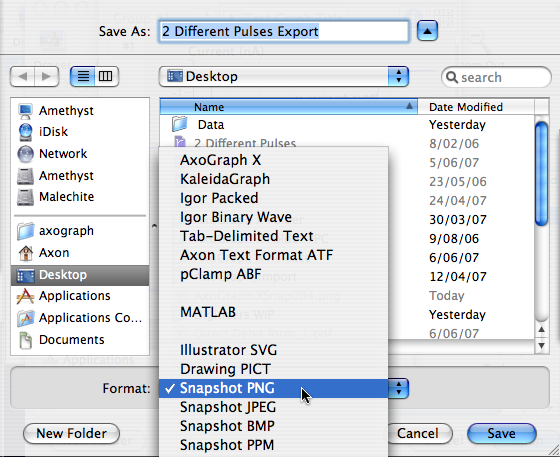
Notes on Import and Export
Igor Pro Packed Experiment and Binary Wave
Igor Pro packed experiment files (extension ".pxp") files typically contain multiple waves ('traces' in AxoGraph X terminology). All the waves in the experiment file are imported to a single graph window.
In contrast, binary wave files (extension ".ibw" or ".bwav") only contain a single wave. When AxoGraph X exports a graph to binary wave format, each trace in the graph window is saved to a separate file.
pCLAMP and AxoScope
AxoGraph can directly read and write ABF data files, the format used by pCLAMP and AxoScope (Axon Instrument's data acquisition applications for Windows).